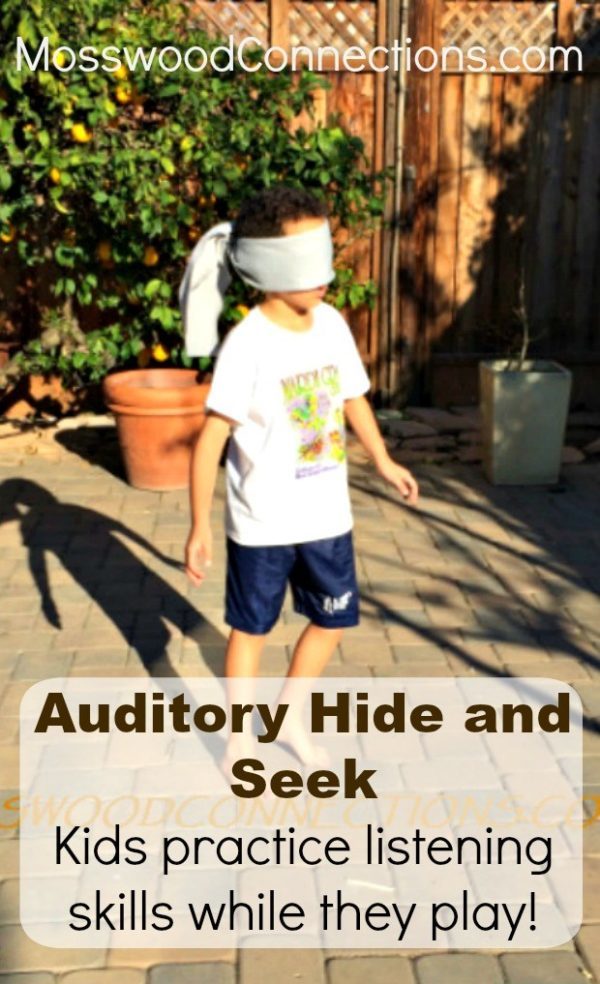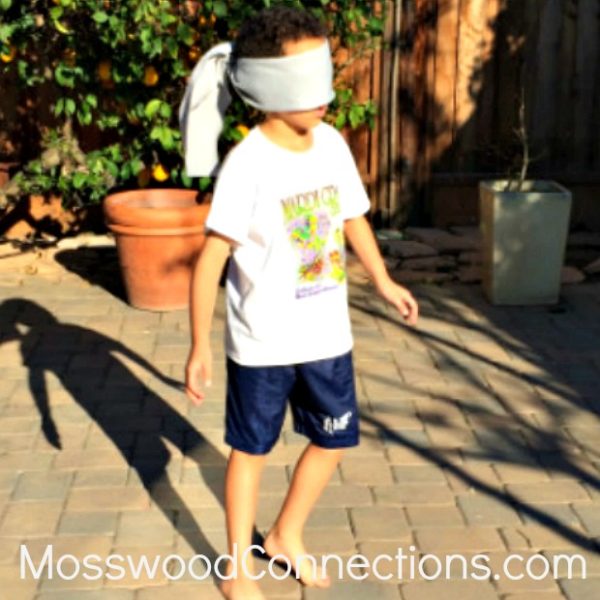Auditory Hide and Seek
An Auditory Processing Game
“Children are not things to be molded, but are people to be unfolded.” ~ Jess Lair
Most of us played hide and seek when we were children and just about all children know the game. It’s a deceptively simple game that involves many skills. Children need to understand object permanence, turn taking, patience, critical thinking, and regulation (after all, it is hard to sit still and be quiet.)
Try turning the classic game of Hide and Seek into this auditory processing game. While children play they will also be working on developing auditory processing skills.
This page contains affiliate links. Please visit our disclosure page for more information.

Auditory Hide and Seek: an Auditory Processing Game
Materials:
- Children
- Blindfolds
- Instruments (optional)
Instructions:
- Find a large space to play.
- Choose someone to be it and someone to be the “conductor”.
- Give each child a sound, word or instrument. For example, tell one child, “Your word is Gumby.” Or “Your sound is Boop”. Have the children practice saying their word, sound or instrument. Make sure to emphasize who is making what sound or word. For example, “Jenny’s sound is ‘Boop’, Nikhil’s sound is ‘Wow’. Let’s practice.”
- Explain that only one child can make their sound at a time. Trust me, this is very important otherwise, you will have a cacophony of a headache producing noise. It is the conductor’s job to choose who makes the sound. The other children make their sound when the conductor points to them. When a child has a difficult time staying quiet for a long time it would be wise for the conductor to choose that child first. If a child continues to be noisy when it is not their turn, have them sit down until it is their turn.
- Blindfold the child who is “it”. The “conductor” points to one of the other players and it is their turn to say their word, make their sound or play their instrument until “it” finds them. Once they are found, have the person who is “it” guess who they found by associating the sound with the person. You can either have the same child be “it” until all the children are found or you can have the person who is found then take their turn to be “it”.

